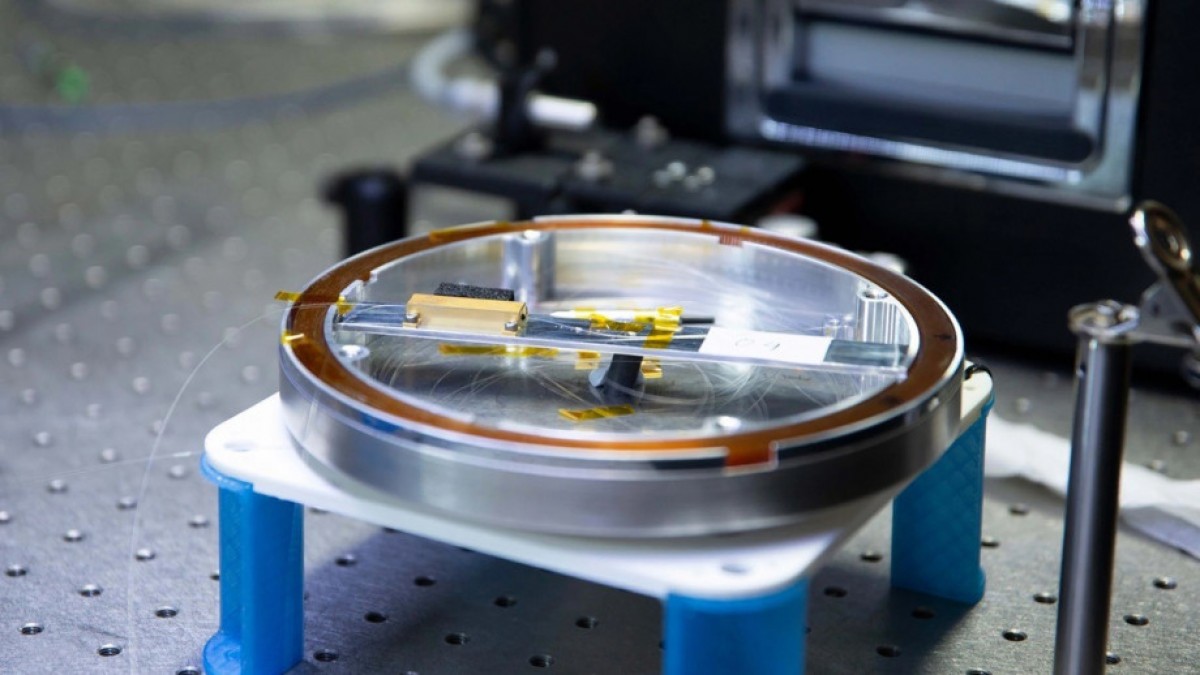Next-generation navigation technology developed in Australia
Australian researchers and industry partners are joining forces to develop, design and manufacture the next-generation of optical gyroscopes for high-precision autonomous navigation in a new $8.7 million project.
The rapid and transformative development of autonomous vehicles in recent years has seen numerous technological breakthroughs. The deployment of ultra high-performance gyroscopes can enhance their performance in terms of safety and guidance.
The use of ultra high-performance gyroscopes can already be found in a wide range of industries including infrastructure management, mining, space sciences, agriculture, and defence. The new project is led by navigation systems manufacturer Advanced Navigation, with research partners The Australian National University (ANU), RMIT University, and commercial partner Corridor Insights. It will develop a new standard for optical gyroscopes, improving precision while reducing cost and size.
Associate Professor Jong Chow from the ANU Centre for Gravitational Astrophysics, and a member of the Australian Research Council Centre of Excellence for Gravitational Wave Discovery (OzGrav), says the collaboration is a chance to bring together expertise from around the country.
"We have such a broad range of photonics expertise in Australia. This project brings it together, creating a nexus between universities, research and education, industry and government," Associate Professor Chow said.
The project has been supported through a $2.8 million Cooperative Research Centre Projects (CRC-P) grant to Advanced Navigation, announced on Tuesday 14 July.
Chris Shaw, CEO of Advanced Navigation, said the project would translate ground-breaking foundational research at universities to commercialisation, demonstrating Australia's capability across the advanced manufacturing pipeline.
"This project will establish Australia as a leading manufacturer of high-performance, cost-effective navigation solutions," Mr Shaw said.
At the core of this endeavour is technology developed at the ANU Centre for Gravitational Astrophysics, OzGrav and Department of Quantum Science. The technique, 'digital interferometry', combines advanced signal processing with precision optics to create ultra-high-resolution measurements using light.
ANU researcher Chathura Bandutunga said: "We use digital signal processing to encode the lightwaves we use for our measurement. This encoding allows us to enhance the sensitivity of our instruments to rotation."
While initially developed for measuring gravitational waves in spaceborne gravitational wave detectors, the ANU team has adapted the technology to find a second home in optical gyroscopes.
"Leveraging this technology for such a far-reaching application like inertial navigation shows the potential our research can have," said Mr Bandutunga.
In parallel, researchers at RMIT's Integrated Photonics and Applications Centre (InPAC) are undertaking leading research in creating photonic chips - miniaturised optical components, enabling large experiments to be put into a much smaller package.
"The clever signal processing developed at ANU allows us to tell apart tiny signals from noise, and our photonic chip technology enables all that functionality to fit on a chip the size of a fingernail," Distinguished Professor Arnan Mitchell from RMIT said.
"By compressing the light detection technology onto a photonic chip we can shrink ultra high-performance gyroscopes from the size of a bread box to the size of a coffee cup."
Taking these research ideas through to the field, commercial partner Corridor Insights will pilot the next-generation of optical gyroscope in autonomous infrastructure management, looking for early detection of defects and faults in Australia's rail network.
With the Federal government announcement, work on the project can proceed at an accelerated pace, putting Canberran innovation on the map.
"This presents a great opportunity to bring the R&D strengths in instrumentation science located right here in the Canberra region to the forefront," Associate Professor Jong Chow said.

